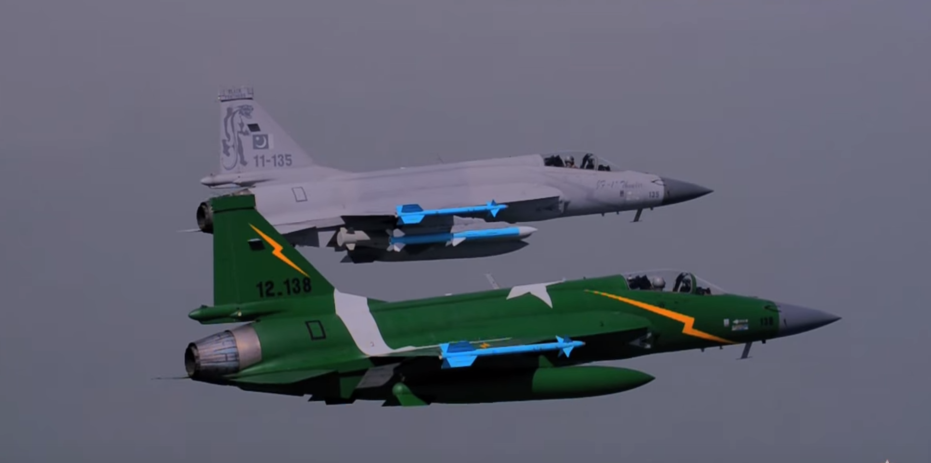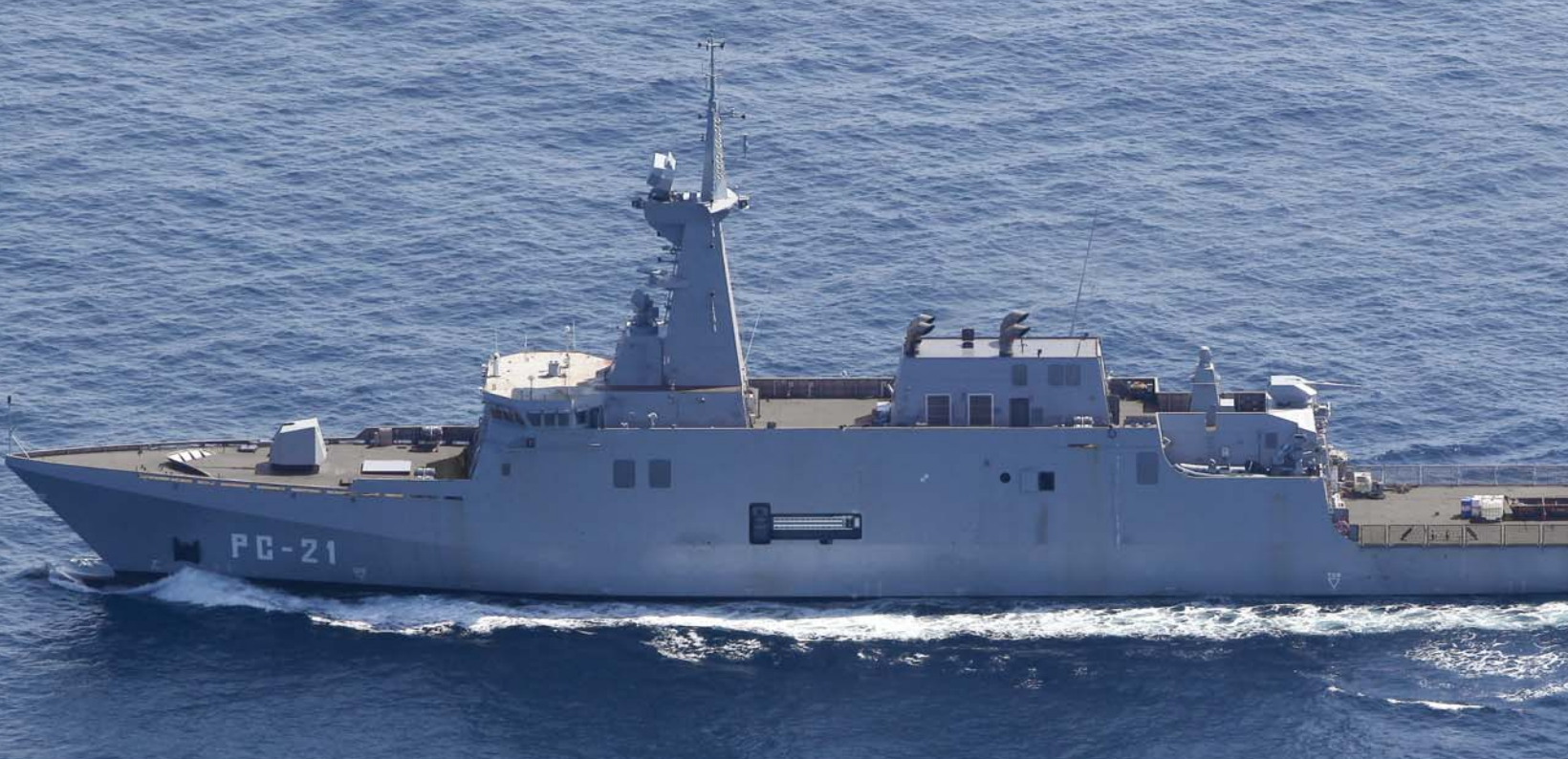2375Views 3Comments

Pakistan Aeronautical Complex open to private sector engagement
The Chairman of Pakistan Aeronautical Complex (PAC) – Air Marshal Arshad Malik – recently called for the domestic private sector to participate in key PAC programs, such as the JF-17 Thunder (Dawn News).
While addressing the Islamabad Chamber of Commerce and Industry (ICCI) on Friday, Air Marshal Malik outlined that PAC was “looking for new design and development programs [such as] upgrading [the] Super Mushshak aircraft [and the] development of unmanned aerial [vehicles].”
In addition to platform development, PAC’s head also outlined future areas of possible collaboration, such as the manufacturing of propulsion and industrial gas turbines.
Air Marshal Malik also stated that PAC was open to having its maintenance, overhaul and manufacturing facilities upgraded through public-private partnerships. In fact, PAC will be undertaking work in relation to the Pratt & Whitney PT6 engine – Air Marshal Malik invited the private sector to engage.
In the immediate term, Air Marshal Malik expects PAC to engage with the private sector by sourcing simple and ‘non-technical’ components such as rubber, cables, batteries, and paint, to name a few.
Notes & Comments:
By placing the JF-17 Thunder as a possible entry point, the Pakistan Air Force (PAF) appears to be making a serious effort towards engaging with the Pakistani private sector. The Thunder is not only PAC’s marquee program, but it is also the emerging backbone fighter of the PAF. In other words, the JF-17 is essentially the largest and most lucrative single defence program at play in Pakistan today.
The PAF could potentially opt to utilize commercial offsets tied to purchases from overseas to enhance Pakistan’s private sector. A hypothetical (though plausible) option could involve buying electronic warfare (EW) and electronic countermeasures (ECM) equipment from Italy’s Elettronica, but requiring that a part of the value associated with the contract be invested in Pakistan. That investment could be channeled to the private sector and take the form of licensed production of components.
The apparent benefit of this approach includes the partial diversion of public funds that would have gone abroad to return home as a form of stimulus. The risk is that the private sector will be dependent on state armament activity to operate unless third-party contracts – either by the original vendor or the domestic firm – are secured. However, a foreign vendor may be more comfortable dealing with a private entity in matters involving sensitive technology intellectual property, which could make transfer-of-technology and expertise easier to negotiate for in comparison to having it absorbed by PAC and the PAF.
Linking the JF-17 to commercial offsets will, at the earliest, be a medium-term prospect. In the short-term, having the PAF approach the domestic private sector base for basic components is the priority. In tandem, opening the wide-scale maintenance, repair, and overhaul (MRO) market to the private sector appears to be on the table. For example, PAC’s Pratt & Whitney PT6 MRO facility, which was announced last year in October, could support Pakistan’s Bell-412EP and Leonardo AW139 helicopter fleets. It could also grow to support other PT6-powered platforms, such as the Turkish Aerospace Industries (TAI) Hürkuş (among others). For as long as the Pakistani armed forces operate PT6-powered platforms, the PT6 MRO base will receive work. PAC opening the door to lucrative MRO work to the private sector – via ‘public-private partnerships’ – seems to be a concession in-exchange for investment in more ambitious efforts.
One of the ambitious areas outlined by Air Marshal Malik includes the development of a UAV. Pakistan’s current stock of armed and intelligence, surveillance, and reconnaissance (MRO) drones are the Chinese CH-3/3A and Italian Falco, respectively. These have been built or assembled under license. However, PAC has been contracted to supply TAI with components for the latter’s Anka medium-altitude long-endurance (MALE) UAV. It is unclear if original development work will gain traction considering the compelling MALE UAV options emerging from China, such as the Cloud Shadow.
Long-term, the PAF’s next-generation fighter program, be it a developmental program or an off-the-shelf purchase, could be the next significant pathway for public and private commercial activity. The private sector could examine engaging in the production of composite aerostructures (for airframes) and components for onboard electronic subsystems, such as radar and EW/ECM. Considerable investment will be necessary for these areas, but if the PAF opens its next-generation fighter to private sector engagement, these investments will see returns. These capacities could be used for overseas programs as well.



3 Comments
by KM
That would be the right step forward if we manage to engage private entities to do R&D and support work. This way we can expect major funding in R&D and in House development, similarly private entities can grab foreign contracts. The key has always been to develop local public-private partnership and it’s not too late.
by MT
For a country with small economy,scale of size pakistan:offset policy really dont help much.
Agosta submarine which was assembled in karachi had very very high imported components since pak didnt have capacity to make them in-house despite bestowed with detailed design of submarine
Offset policy can only grow in parallel with local R&D- Pakistan economy over all spend 1-1.2 bill$ on R&D(0.4% of total gdp) most of which is spent on making nuclear bombs,improving shaheen & nasr missile which leaves almost nothing for local program development.
Lack of R&D by govt affects rise of pvt sector which is by pakistan is still more focused on procurement and assembly.
India ordered 300 Su30MKI but even with such large orders,Russian didnt offer any bit of EW,ECM & Radar technology. It may be possible that new Super sukhoi upgrade may come up with some offers as India is in more commanding position into any negotiations.
Currently India is negotiating with Lockheed martin for F-16 block 70 but its still hard to get american govt approval to allow Lockheed martin to manufacture their radar under their indian subsidiary. GE India which have yearly revenue of 10-12 bill$ hasnt been able to get license partial manufacture Ge Aircraft engines in India.
So the best bet is to
1. start your own program from scratch with local R&D.
use the Offset money to western companies as consultancy fee for problems affecting your local R&D.
2. West will only offer you technology once you have a working prototype system in place.
by Sami Shahid
Well why Pakistan does not buy CH-4 drones from China ?